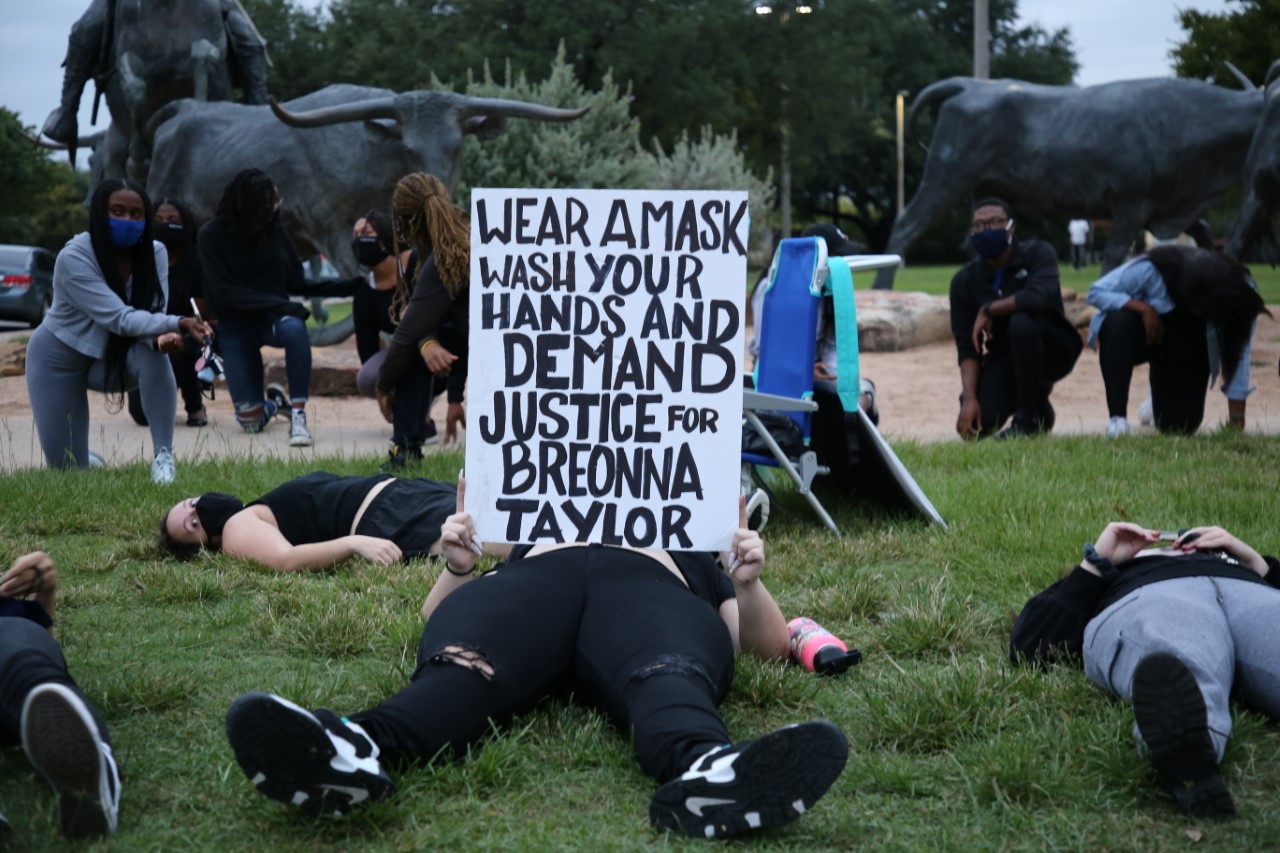In smaller newsrooms, some sports reporters are covering 10 sports at once
On New Year’s Eve in New Orleans, Kansas State Wildcats football fell to the world-renowned Alabama Crimson Tide, 45-20 in the Sugar Bowl. Kansas State finished a historic season for the program, taking me to the press boxes of the Superdome in New Orleans and AT&T Stadium in Arlington, Texas, for the Big 12 Championship Game.
Just under 1,000 miles away in Manhattan, Kansas, the Kansas State Wildcats men’s basketball team defeated then-No. 24 ranked West Virginia 82-76 in an overtime thriller. The men’s basketball team’s 12-1 record shocked many but still were not the main Manhattan storyline. Not yet at least.

Seventeen days later, back in Manhattan, I found myself in the press section in Bramlage Coliseum as the Wildcats won another overtime thriller. This time against No. 2 ranked in-state rival Kansas Jayhawks 83-82. The Wildcats now held a 16-2 record and were the No. 13 ranked team in the country. As the student section enveloped the court in a matter of seconds after the final buzzer rang, head coach Jerome Tang and the team had become the next Kansas State team to take the nation by storm.
As newsrooms shrink and beat reporters compete with scarce resources, most local sports journalists must cover multiple sports these days, sometimes simultaneously.
“Kind of sad actually,” National Sports Media Association executive director Dave Goren said about the sports writer job market. “A lot of people have gotten laid off lately, including a handful of our award winners who were just here.”
Just recently, ESPN announced layoffs of many highly known on-air personalities. The Athletic also laid off 20 reporters in June of 2022. Goren said that the issue would need a major commitment to fix the issues causing layoffs in sports and news journalism.
“It would take somebody to invest millions and millions of dollars in news gathering or news reporting organizations,” Goren said. “There are a handful now of these nonprofit organizations that are trying to make a go of it. I wish them the best of luck. It’s good for us as a society.”
Depending on the circumstances, the work can be both rewarding and time consuming. That was the case for Jason Martin, former writer at the Daily Journal in Indiana from 2003-2009. Indianapolis was home to two very prominent teams in the NFL’s Colts and the NBA’s Pacers.
“When you’re in a relatively small market and you’ve got two good teams you’re going back and forth and we’re limited staff” with three full-time reporters,” Martin said. “We’re still trying to cover our local high school and whatever came up. We were very, very busy but it was so exciting to be a part of.”
For Martin, his main job was covering the Colts who were at their peak, winning the Super Bowl in 2007 while serving as the backup reporter for the Pacers. With limited staff, any major moment with the Pacers would require his immediate attention. One of those occurrences was one of the most infamous moments in sports history: The Malice at the Palace.
The Malice at the Palace was a brawl between Pacers players, most notably Ron Artest, and Detroit Pistons fans that went into the stands of The Palace in Auburn Hills, Michigan, right in the middle of the Colts season. Martin was sent to Ron Artest’s press conference the next day, just the day the Indianapolis Colts would go on to play against the Chicago Bears, adding a new wrinkle to his schedule.
Covering multiple professional teams may have a reporter’s schedule become discombobulated. That case could be even more so for those covering multiple high school sports exclusively.
“I never worked a consistent schedule,” said Les Winkeler, former Sports Editor of The Southern Illinoisan. “You might cover one game in the afternoon one day and the next day you’re covering a game right out into (the) deadline. You really had to be flexible and adapt.”
The variety of sports to cover in high school sports is much greater than professional sports. Winkeler said he covered up to 10 sports, from football to cross country. That’s a lot of sources to maintain. Winkeler said his staff could keep up with the event coverage but then had to figure out when coaches were free for interviews. Winkeler would ask all the coaches when their breaks were during the day and kept a hand-written list to know when coaches would be available.
“You had to use a little ingenuity when covering that many people,” Winkeler said.
Both Martin and Winkeler also were challenged by having to learn new sports well enough to cover expertly during their reporting careers. For Winkeler, it was soccer.
“I had never really been around soccer at all,” Winkeler said. “That was a pretty severe learning curve. There were times when I would rely on other people there or officials working the clock or whatever to explain things to me.”
In Martin’s case, he headed into Indiana knowing about two sports the city was infatuated with, basketball and football. Still, Martin found himself with limited knowledge of one of Indiana’s favorite sports: Motorsports. The heart of Indiana’s motorsports love is the Indianapolis 500, one of the most famous automobile races in the world. Martin had to learn the sport from people he knew beforehand and then by experiencing the event and the environment itself as a reporter.
“You’re not going to be the expert in everything,” Martin said. Most people come to sports journalism having played sports at some level. “Then they’ve got the ones that they’re passionate about following themselves,” he said. “I think inevitably, especially if you’re in the general assignment kind of situation, you can end up with a lot of things, a lot of possibilities.”
Martin, similarly to other sports journalists, was thrown into a sport and an area which he knew little about. Martin became accustomed to the area’s love of motorsports and more by leaning into his skills. For those in the sports journalism world, as much as the assignment is to cover the sport, the work goes beyond learning the intricate details of each sport there is to work on. In the end, the journalist must adapt and lean into their skills as a pure journalist, no matter the sport.
“What you can rely on is just your reporting skills, telling stories of a person,” Martin said. “So much of sports journalism is telling the stories about people with the added element of competition that draws people to it and makes people want to read what you’re writing.”
Luke Lazarczyk is a Kansas-based sports reporter.


